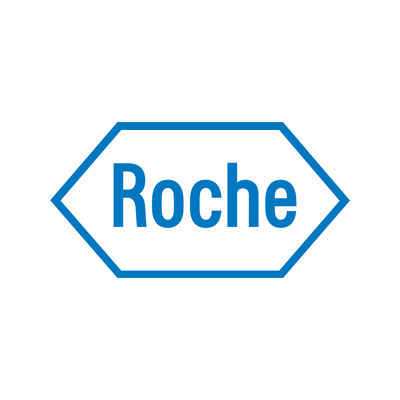预约演示
更新于:2025-05-10
Ro-40-0655
更新于:2025-05-10
概要
基本信息
原研机构 |
在研机构- |
非在研机构 |
权益机构- |
最高研发阶段终止药物发现 |
首次获批日期- |
最高研发阶段(中国)- |
特殊审评- |
关联
100 项与 Ro-40-0655 相关的临床结果
登录后查看更多信息
100 项与 Ro-40-0655 相关的转化医学
登录后查看更多信息
100 项与 Ro-40-0655 相关的专利(医药)
登录后查看更多信息
12
项与 Ro-40-0655 相关的文献(医药)2008-08-01·Journal of Cancer Research and Clinical Oncology
Additive effects of PI3-kinase and MAPK activities on NB4 cell granulocyte differentiation: potential role of phosphatidylinositol 3-kinase γ
Article
作者: Klaus Höffken ; Joachim H. Clement ; Reinhard Wetzker ; Yuantao Liu ; Tzvetanka Bondeva ; Sebastian Scholl
PURPOSE:
In acute promyelocytic leukemia (APL) the chromosome translocation t(15;17) resulting in the PML-RAR alpha fusion protein is responsible for a blockage of myeloid differentiation. In this study we investigated the expression of different Phosphatidylinositol 3-kinase (PI3K) isoforms during granulocyte differentiation of NB4 cells induced by all-trans-retinoic acid (ATRA), 9-cis-retinoic acid (9cisRA) or retinoic acid receptor (RAR) agonists.
METHODS:
NB4 cells were analysed for their ability to differentiate into granulocytic lineage by the use of ATRA, 9cisRA or RAR agonists. Expression of signalling proteins was investigated by western blot and real-time PCR. PI3K activity was determined by in vitro kinase assays.
RESULTS:
Co-treatment of NB4 cells with either LY294002 to inhibit PI3Ks or PD98059 in order to suppress MEK activity led to significant reduction of CD11b surface expression during ATRA, 9cisRA or the RAR alpha agonist Ro40-6055 dependent NB4 cells granulocyte differentiation. We also show that only the G-protein coupled receptor activated PI3Kgamma isoform demonstrates up-regulated protein and mRNA expression during myeloid differentiation of NB4 cells via RAR alpha and RAR beta-dependent mechanism. Furthermore, activation of MAPK cascade including phosphorylation of MEK increases during retinoid induced differentiation of NB4 cells. Interestingly, protein kinase assays of immunoprecipitated PI3Kgamma revealed a protein of about 50 kDa that is phosphorylated when NB4 cells were treated with the RAR alpha agonist Ro40-6055.
CONCLUSION:
Collectively, our data suggest additive effects of PI3K and MAPK activity on ATRA-dependent NB4 cells granulocyte differentiation.
2005-08-01·Journal of thrombosis and haemostasis : JTH2区 · 医学
Significance of the transcription factor KLF5 in cardiovascular remodeling
2区 · 医学
Review
作者: K. Aizawa ; R. Nagai ; I. Manabe ; T. Suzuki ; T. Shindo
Structural remodeling of the heart and blood vessels is an important pathologic process in the development of many cardiovascular diseases. However, transcriptional regulation of altered gene expression during cardiovascular remodeling is not well understood. We previously isolated KLF5/basic transcription element-binding (BTEB)2, a Krüppel-like factor, as a transcription factor that binds the promoter of the embryonic smooth muscle myosin heavy chain gene (SMemb). KLF5 activates many genes inducible during cardiovascular remodeling, such as platelet-derived growth factor (PDGF)-A/B, Egr-1, plasminogen activator inhibitor-1 (PAI-1), inducible nitric oxide synthase (iNOS), and vascular endothelial growth factor (VEGF) receptors. KLF5 is abundantly expressed in embryonic smooth muscles and is down-regulated with vascular development, but reinduced in proliferative neointimal smooth muscles in response to vascular injury. In KLF5 gene-targeted mice, homozygotes die at an early embryonic stage whereas heterozygotes are apparently normal. However, in response to external stress, arteries of heterozygotes exhibit diminished levels of smooth muscle and adventitial cell activation. Furthermore, angiotensin II-induced cardiac hypertrophy and fibrosis are attenuated in heterozygotes. KLF5 activities are regulated by many transcriptional regulators and nuclear receptors, such as retinoic acid receptor-alpha (RAR alpha), NF-kappaB, PPAR gamma, p300, and SET. Interestingly, RAR alpha agonist suppresses KLF5 and cardiovascular remodeling, whereas RAR alpha antagonist activates KLF5 and induces angiogenesis. These results indicate that KLF5 is an essential transcription factor in cardiovascular remodeling and a potential therapeutic target for cardiovascular disease.
2001-05-01·Biology of reproduction2区 · 生物学
Retinoid Receptors Involved in the Effects of Retinoic Acid on Rat Testis Development1
2区 · 生物学
Article
作者: R. Habert ; G. Livera ; V. Rouiller-Fabre
We have previously shown that retinoic acid (RA) is able to act on the development of Leydig, Sertoli, and germ cells in the testis in culture (Livera et al., Biol Reprod 2000; 62:1303-1314). To identify which receptors mediate these effects, we have now added selective agonists and antagonists of retinoic acid receptors (RARs) or retinoid X receptors (RXRs) in the same organotypic culture system. The RAR alpha agonist mimicked most of the effects of RA on the cultured fetal or neonatal testis, whereas the RAR beta, gamma, and pan RXR agonists did not. The RAR alpha agonist decreased the testosterone production, the number of gonocytes, and the cAMP response to FSH of fetal testis explanted at 14.5 days postconception (dpc). The RAR alpha agonist disorganized the cords of the 14.5-dpc cultured testis and increased the cord diameter in cultured 3-days-postpartum (dpp) testis in the same way as RA. All these RA effects could be reversed by an RAR alpha antagonist and were unchanged by an RAR beta/gamma antagonist. The RAR beta agonist, however, increased Sertoli cell proliferation in the 3-dpp testis in the same way as RA, and this effect was blocked by an RAR beta antagonist. The RAR gamma and the pan RXR agonists had no selective effect. These results suggest that all the effects of RA on development of the fetal and neonatal testis are mediated via RAR alpha, except for its effect on Sertoli cell proliferation, which involves RAR beta.
100 项与 Ro-40-0655 相关的药物交易
登录后查看更多信息
研发状态
10 条进展最快的记录, 后查看更多信息
登录
| 适应症 | 最高研发状态 | 国家/地区 | 公司 | 日期 |
|---|---|---|---|---|
| 结肠癌 | 药物发现 | 瑞士 | - |
登录后查看更多信息
临床结果
临床结果
适应症
分期
评价
查看全部结果
| 研究 | 分期 | 人群特征 | 评价人数 | 分组 | 结果 | 评价 | 发布日期 |
|---|
No Data | |||||||
登录后查看更多信息
转化医学
使用我们的转化医学数据加速您的研究。
登录
或

药物交易
使用我们的药物交易数据加速您的研究。
登录
或

核心专利
使用我们的核心专利数据促进您的研究。
登录
或

临床分析
紧跟全球注册中心的最新临床试验。
登录
或

批准
利用最新的监管批准信息加速您的研究。
登录
或

特殊审评
只需点击几下即可了解关键药物信息。
登录
或

Eureka LS:
全新生物医药AI Agent 覆盖科研全链路,让突破性发现快人一步
立即开始免费试用!
智慧芽新药情报库是智慧芽专为生命科学人士构建的基于AI的创新药情报平台,助您全方位提升您的研发与决策效率。
立即开始数据试用!
智慧芽新药库数据也通过智慧芽数据服务平台,以API或者数据包形式对外开放,助您更加充分利用智慧芽新药情报信息。
生物序列数据库
生物药研发创新
免费使用
化学结构数据库
小分子化药研发创新
免费使用
